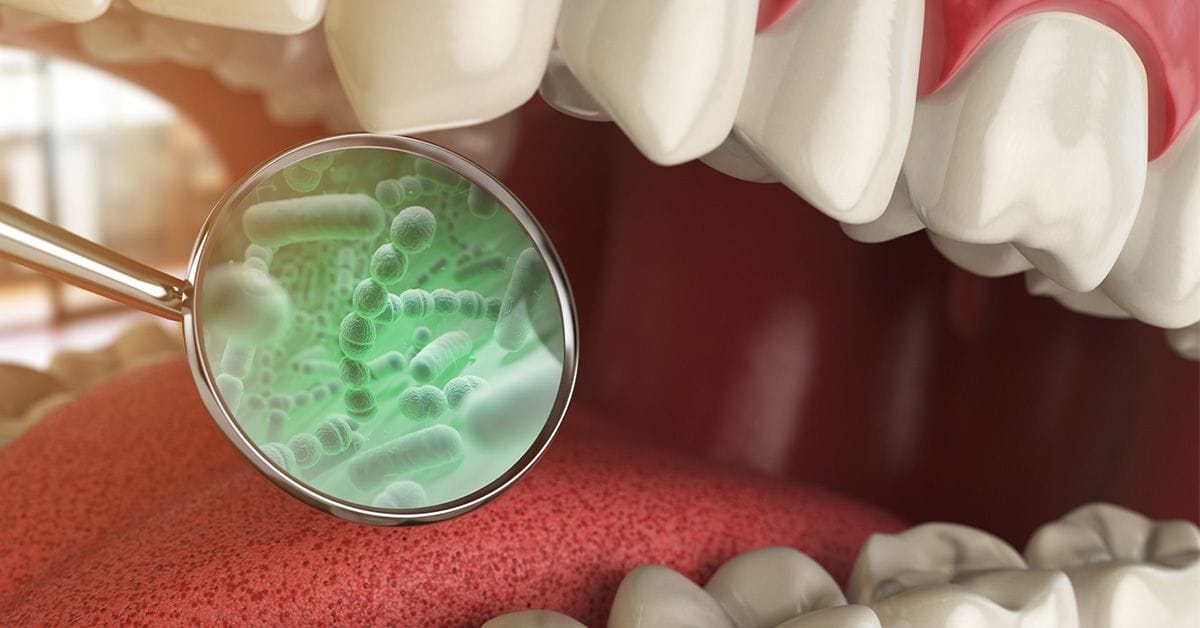Bacterial infections are a major cause of cavities, gum inflammation, and other dental diseases. Could nanozymes and sensing arrays modeled on the human tongue offer a novel solution?

Bacterial infections are the major cause of cavities, gum disease, and the inflammation and bone loss that can occur around dental implants. Beyond being a purely cosmetic concern, dental diseases seriously affect quality of life, and long-term dental infection can lead to systemic diseases such as endocarditis or brain abscess. Being able to efficiently distinguish and eliminate multiple bacteria would help early diagnosis and clinical treatment, but conventional techniques such as polymerase chain reaction (PCR) or enzyme-linked immunosorbent assay (ELISA) are complicated by high cost and long operation time.
Inspired by the natural tasting functions of the tongue, array-based patterns—or “electronic tongues”—have attracted interest. The human tongue relies on several cross-sensitive receptors to generate a unique stimulus that the brain can store and later compare with new stimuli. Instead of matching each substance to a specific sensor, the electronic tongue looks at the overall pattern of reactions. Advanced statistical analysis methods then turn this complex information into easy-to-understand visual graphics, making it simpler to identify and differentiate various substances.
Now, a cross-disciplinary study published in ACS Applied Materials and Interfaces reports on an innovative, enhanced electronic tongue based on a colorimetric sensor array designed for both detecting and eliminating bacteria.1 This array uses programmable DNA-encoded iron oxide nanoparticles (IONPs) as the sensing elements, which mimic the action of natural enzymes—so-called nanozymes.2 When added to a mix of hydrogen peroxide and a colorless indicator, the IONPs turned the solution bright blue. However, the presence of bacteria decreased the reactivity, reducing the amount of blue produced. Coating the nanozymes with different DNA to adhere to specific bacteria allowed the team to link individual species with unique changes in color signals.
In tests across 11 bacteria and 6 proteins in artificial saliva samples, the sensor array was able to identify all targets. Additionally, the sensor allowed the team to distinguish whether a dental plaque sample had come from a healthy volunteer or from a person with cavities. But the real genius of this electronic tongue is that the sensor array could also kill multiple bacteria through its peroxidase-like activity, which could have great potential in clinical prophylaxis and treatment.
This new electronic tongue builds on previous research in the area by some members of the same team. Efforts include a nanozyme-based colorimetric sensor array for precise identification of proteins and oral bacteria.3 This earlier work used programmable nanozymes supported by metal nanoparticles as artificial receptors. When tested, the sensor array was able to distinguish blind samples, as well as proteins in both human serums and simulated body fluid environment, heat-denatured proteins, and even clinical cancer samples.
The technology may also be useful beyond oral health, with other groups testing electronic tongues for the purpose of environmental monitoring and simplification of water-quality analysis.4 This study, published in Analytical Chemistry, describes good discrimination of six different metal ions in deionized water and real samples, which could offer potential for detecting the accumulation of toxic metals in the environment. Similar to current detection methods for oral bacterial infections, today’s gold-standard approaches in water monitoring are expensive, complex, and inflexible procedures that preclude their use in point-of-use testing—such as inductively coupled plasma mass spectrometry (ICP-MS) or atomic-absorption spectrometry (AAS). Additionally, others studies have tested electronic tongues' ability to recognize specific amino acid derivatives in dietary supplements, a feature that could one way prove useful for pharmaceutical analysis.5
Whatever its chemical basis, the electronic tongue could revolutionize sampling efforts across multiple areas of study, emerging as a powerful tool for the detection and discrimination of diverse analytes.
References
- Zhang, L. et al. Enhanced “Electronic Tongue” for Dental Bacterial Discrimination and Elimination Based on a DNA-Encoded Nanozyme Sensor Array. ACS Appl. Mater. Interfaces 2024, 16, 9, 11228–11238.
- Robert, A. and Meunier, B. How to Define a Nanozyme. ACS Nano 2022, 16, 5, 6956–6959.
- Lu, Z. et al. Metal-Nanoparticle-Supported Nanozyme-Based Colorimetric Sensor Array for Precise Identification of Proteins and Oral Bacteria. ACS Appl. Mater. Interfaces 2022, 14, 9, 11156–11166.
- Li, X. et al. Electronic-Tongue Colorimetric-Sensor Array for Discrimination and Quantitation of Metal Ions Based on Gold-Nanoparticle Aggregation. Anal. Chem. 2019, 91, 9, 6315–6320.
- Kossakowska, A. et al. Toward an Electronic Tongue Based on Surfactant-Stabilized Chemosensory Microparticles with a Dual Detection Mode. ACS Appl. Mater. Interfaces 2022, 14, 44, 50375–50385.
